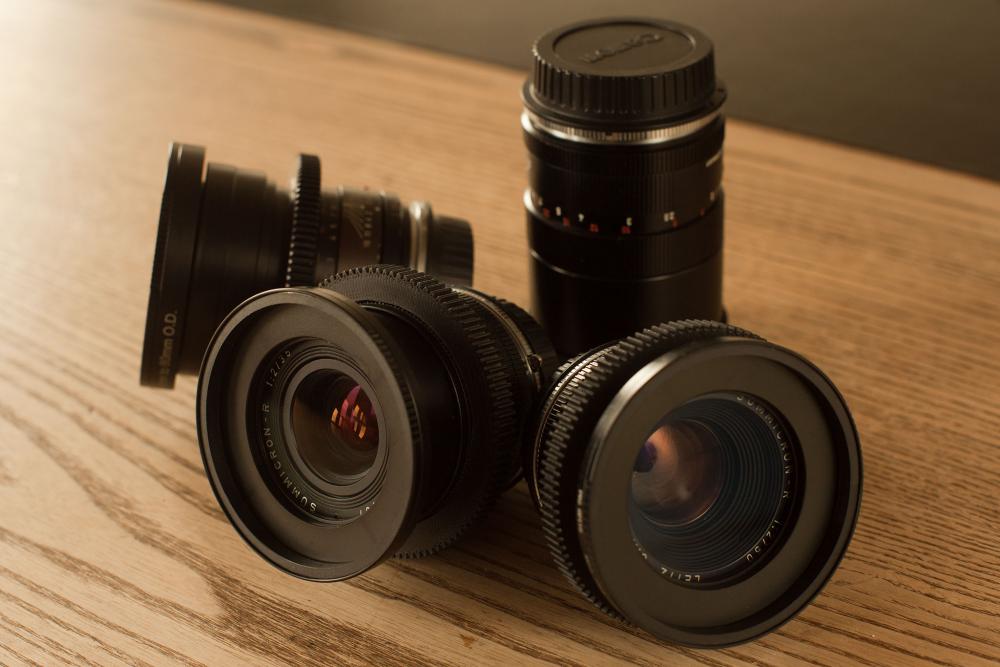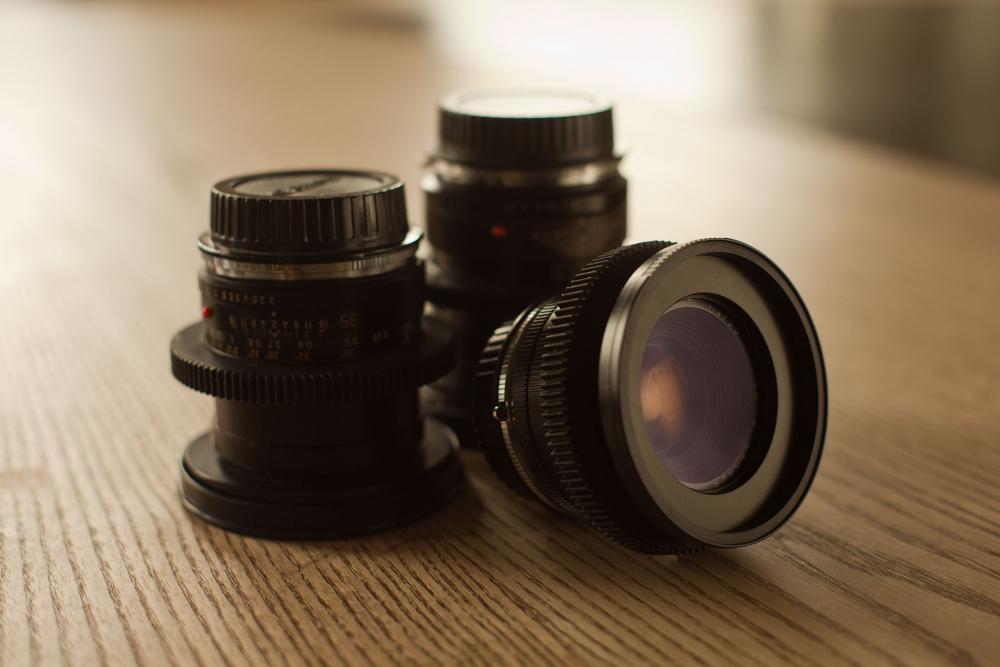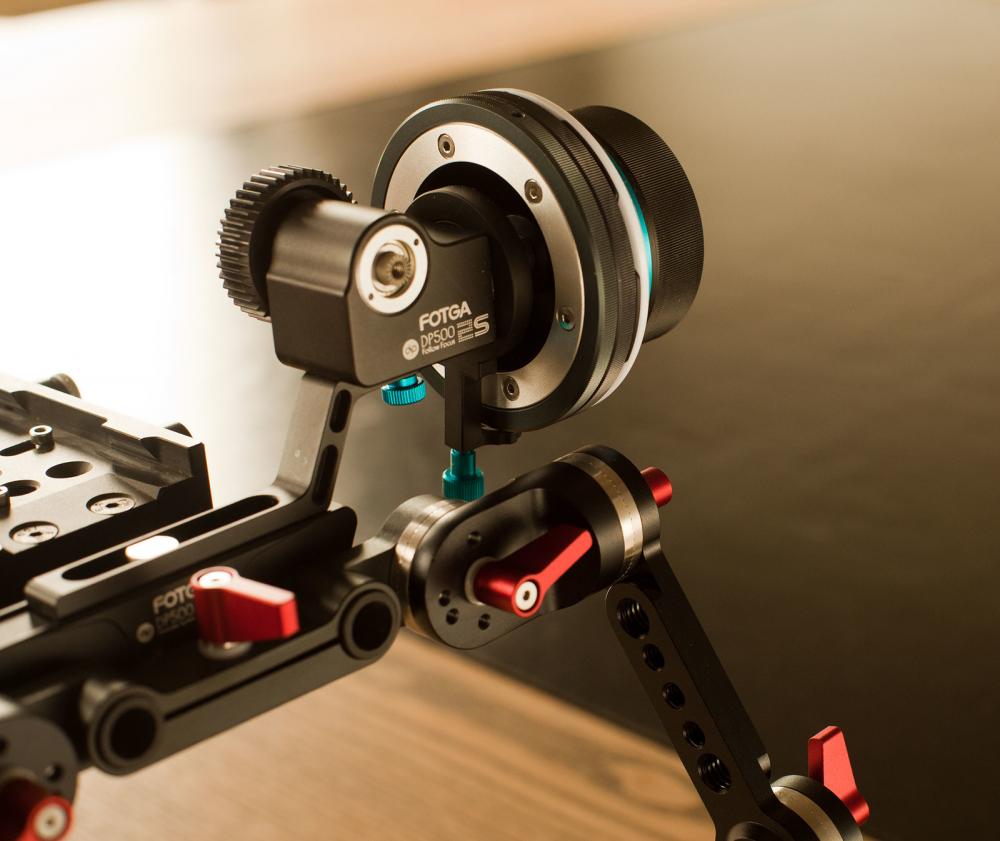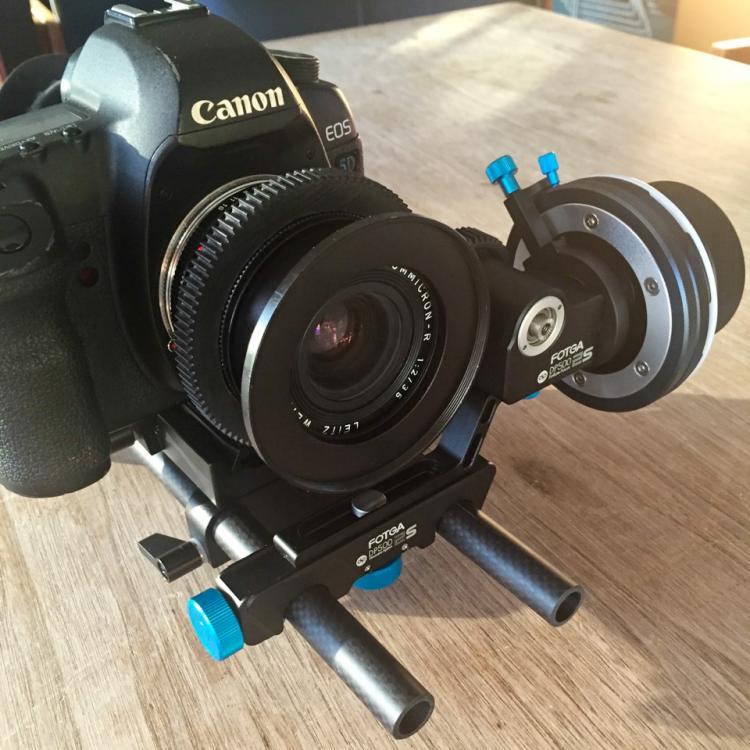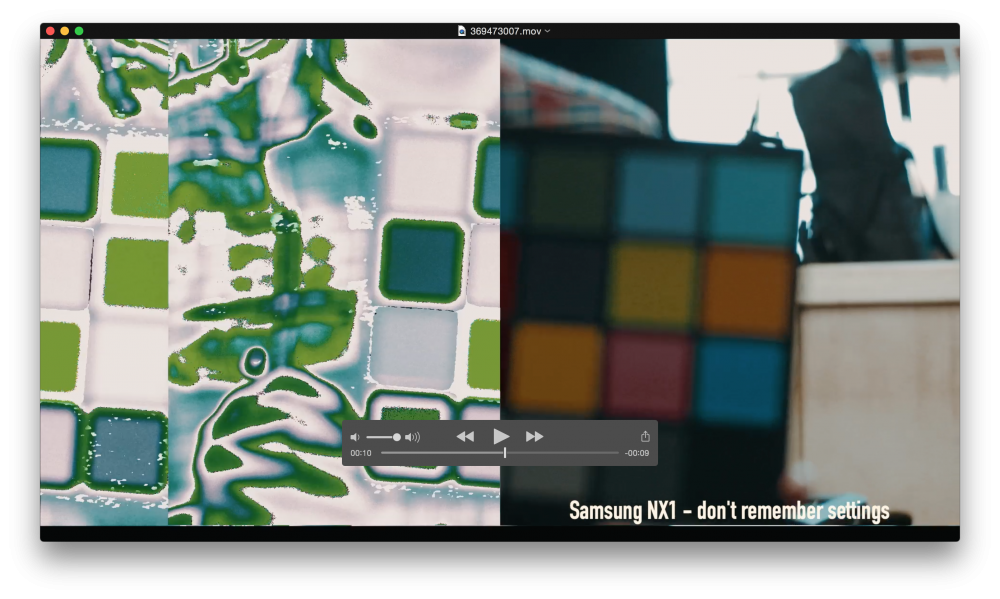-
Posts
111 -
Joined
-
Last visited
Content Type
Profiles
Forums
Articles
Everything posted by Raafi Rivero
-
Agreed. You can start with one or two people, though. Friends you shoot with, or who do similar stuff. The people you talk about movies with, etc. Over time you'll find more. The screening room in this forum might be the type of place you're talking about but it's definitely a lot less active than the parts of the forum where people are talking about gear.
-
With a client I make sure to specify in the contract how many rounds of notes there will be. Two is typical, some may ask for three. And for lower-budget projects we'll get it in writing that there will only be one round. It helps to make sure that when the client is giving you notes they actually have something to say, or that there's someone on the client side responsible for making sure that everyone who's supposed to weigh in does weigh in, and that person collates the notes more effectively. It is also good leverage to have it specified in a contract so that, for instance, each additional round of notes costs X, or each day of work on additional rounds costs X amount. Without having that break, some clients will go overboard asking for "little" changes again and again. You want to make sure that with notes they're really serious or their willing to pay to go over. It doesn't have to feel draconian. Sometimes a gentle reminder in the process can help prod the client to be focused, "we only have one more round of notes specified in the contract, so please make sure everyone has seen or weighed in." Specifying the number of rounds of notes also helps you bid, budget, and schedule jobs more effectively. With feedback on creative projects it is crucial to cultivate a group of people and/or collaborators whose taste you trust. Online, you never know what some bozo is going to say, especially if they have no connection to you or the project. Online feedback tends to be more negative, and people rarely balance positive feedback with negative as people who know you will tend to do. That said, you also don't want to only share the work with friends who will only tell you good things. That kind of echo chamber can be equally limiting. You should have specific points in the process where you're looking for feedback. After a polished first draft of a script, say, after a few more drafts. After a rough cut, etc. Sometimes, especially with personal projects, you're not always at a stage when feedback is necessary or useful. Be sure that you're confident that you're not wasting your (or the other person's) time when soliciting feedback. Like, you really just wanted someone to tell you that it's awesome and weren't really looking for notes. Sometime's it's even helpful to have a questionnaire: what did you think of this character? is the turkey joke working? what did you think of the end?, etc. so that you're targeting the feedback to areas of the project you're worried about or looking to improve. Again, I think the key is to cultivate a group of people with differing viewpoints, whose taste (and work) you trust to give feedback. It might not always be the same group for each project. Or for whatever stage you are in the project. But getting the right kind of feedback, at the right points in the process is essential to honing your ideas.
-
The 4k version has a Super35 sensor.
-
BMD has been manufacturing products for years and the Ursa Mini still was a year late. Not optimistic on their delivery timeline, but I hope Craft Cine proves me wrong.
-
Agreed. Their cameras don't try to do too much. (And I was there for the Tom Antos Kinemax test posted earlier in the thread). On the Kinemax the menus were very straightforward, responsive. The color science gives a nice flat image that's ready for grading. No wonky "Sony colors", no BS. There were some issues with that camera, though, as Tom pointed out in the video. I believe the team at Kine are working overtime on the engineering side to add features and solve issues. But the biggest question mark before I pay that much cash (admittedly much less than similarly-spec'ed cameras) is whether the box is production ready? Does it work in the cold and in the snow? In the Rain? In blistering heat? How reliable is it? That's the $5000 question that separates the Terra and, say, a used Sony F5, or Epic Dragon. If it were priced to compete with the Ursa Mini 4.6k I'd be ready to buy, but in that FS7 range the reputation of the company, and resale value does carry a little more weight. That said, the Terra looks very promising. I want one. Or, at least, to test one.
-
Your motivation for making films, especially independent films, can't be solely about profit. Your passion to tell stories must be at the core of why you do this work. Otherwise go be a dentist. People will always be willing to have their teeth fixed. Willing to pay for art? Not so much. As far as making a living as a filmmaker there are several options downstream from big budget Hollywood director. Those options become less and less appealing by the time you get to something like "Briss videographer", but they exist. As far as cutting through the clutter and achieving mainstream, critical, and financial success? Those projects are rare birds indeed. It's why filmmakers idolize people like Tarantino, Kevin Smith, and Steven Soderbergh. Because they did it. As JCS said earlier in the thread, you simply have to make an exceptional film. I can remember seeing Christopher Nolan's Memento in a theater. No big stars, just a phenomenally interesting concept executed at the highest level. The trajectory from there to Inception was not guaranteed, but the promise was certainly there from the beginning. Keep working. Get better. Find your level. I'm pulling for you.
-
Here's my list: 1. Pulp Fiction 2. Jackie Brown 3. Django Unchained 4. Reservoir Dogs 5. Hateful 8 6. Kill Bill 2 7. Inglorious Basterds 8. Kill Bill 1 (haven't seen Death Proof). While the cinematography of H8 was predictably great (Bob Richardson on 70mm film), the film didn't have that much to actually say about the human condition. Further, though he recycled the technique and setups from the best two sequences of Inglorious Basterds, the film failed to maintain the pot-boiling intensity of those sequences. The film didn't have the same outright ingenuity and originality of some of his other masterpieces either. Sure there were moments where resurrecting old film techniques felt fun, without being kitschy. But there weren't enough "movie" moments like when Django is revealed in the purple suit, or when Vincent stabs the adrenaline into Mia's heart. That said, it's Tarantino through and through. He's one of the best to ever do it. And I will watch his worst over most directors' best any day of the week.
-
Hey folks, I've been posting here for close to a year. All the while working on this project in the background. It's a dramatic coming-of age tale. We shot on both Canon c500 and Red cameras, with vintage Cooke S2 lenses. Let me know what you think!
-
If I can cut the onion a tiny bit slimmer -- I'm not loving much of the cinematography in the clips on that thread, but the image quality itself (i.e. skin-tones, dynamic range, rolling shutter, etc.) looks pretty good. It's like, playing on a Fender won't make the average guitarist into Jimi Hendrix.
-
The Canon 50mm L was the lens that convinced me to finally invest in high(er)-end glass. I had been shooting a vintage set of Pentax Super Takumars for years (the 50mm 1.4 Super Tak is my first love), but compared to the 50mm L on back-to-back shoot days it just couldn't deliver the sharpness and fall-off of the modern glass. That day and subsequent days shooting the L 50mm (and other L lenses) gave me so much confidence. After an exhaustive search I found that the Leica Rs give the right amount of sharpness and pop in the image, with a comparable amount of... "romance?"... character? that the vintage lenses often provide for my style of shooting and content. If anyone else is thinking of jumping in to the Leica game, over the past year I've compiled this vimeo collection of stuff shot on them (none by me, sadly). You'll find that they're quite versatile.
-
I built a set of vintage Leica R's this year -- 28mm, 35mm, 50mm, 90mm, 135mm. Not planning on using anything else except an occasional zoom for a long time. Here are a couple pics of the set from before I added the 28.
-
I'd recommend 3D printing focus rings for your lenses. That way you can make the diameter of the focus ring much wider than the diameter of the lens itself. This will help extend the relative focus throw. For info on how to do that, I got all the info from this thread on another forum. Second, re: follow focus, I can highly recommend the Fotga DP500 2S -- it's lighter weight than the Kamerar recommended earlier in the thread (which was copied from the Gini Rigs version that i once owned). The Fotga comes with 3 different sized gears that you can swap to help manage lenses with short focus throws. There are a lot of different model fotga FF's out there so make sure to get the 500 2S, which has all of the features I mentioned above and a quick-swap rail block. This follow focus by Lensse also looks interesting and they sell an optional larger gear which will help extend those focus throws.
-
That is pretty enticing, especially if you're considering purchasing the C300 mkII. The dynamic range of the F5 is claimed 14stops, and though I haven't tested it with scopes, it performed very well on the couple jobs I used it.
-
That's me assisting Tom in the video and holding the light panel, etc. And a couple shots in the video were on my Leica R primes! As far as purchasing, the main worry is the footage cutting out or those weird artifact issues. As he says in the video, the new firmware is supposed to address these issues, but I'd rent it for a shoot at least once and field test to be sure. Usability-wise, the camera was very intuitive. The menus were simple, clean, and easy to navigate. It was easy to pick up the camera and just start shooting. Even though I was there, I'm surprised how nicely the grade of the night footage turned out. The grain was apparent in the raw footage, but it seems to be very minimal looking at it now. And it was apparent even on set that the camera was pretty decent in low light. Bang-for-buck wise it gives a lot of the same specs as a Red, but there are of course some trade-offs.
-
thanks, Joe. The footage is looking really organic. The one shot with the high ISO was a bit grainy (if it's the one I'm thinking), but the images look rock solid!
-
I've been following that BMCuser thread as well. The Lensse S5 looks interesting, but is less appealing if you're not working with camera assistants. I generally always pull focus from one side so don't need the extra bulk/weight. I recently purchased the Fotga DP500 IIS after watching this review (and several others). Mine just arrived a few days ago. I couldn't be happier with the build quality, lack of play, and feature set. All at a great price. It doesn't have a reverse gear, but I don't shoot Nikon lenses, so it's not a concern. If you're interested, be sure to watch this video which talks about the differences between the Fotga models.
-
Of course Polanski shot all of Chinatown with a 40mm Anamorphic. I think it's important to not be paralyzed by choices when on set. There are enough things to grab your attention. One of the reasons why I prefer working with a limited set of primes is that you start to know their characteristics by heart. A location immediately gives you a feeling for a focal length or two, and then it's right into lighting and shooting.
-
With the back-of-the-envelope math, it still seems like the Ursa Mini - 4k version - is the better bargain. Even the flip-out screen on the Ursa Mini gets you up and running right away, no need for an EVF. @Taranis -- there's no way I'd take that C-Box out in the field. it just doesn't look suited for actual production unless you're in a studio.
-
yeah, also getting insane compression errors on this. Downloaded the original from vimeo and got the same problem. Is that a codec issue?
-
I think the reason we spend so much time writing and obsessing about gear on forums is that there are actually two processes involved in getting better at the craft of making films. One is a technical process: how to achieve better shots, better sound, smoother motion, dynamic range, etc. This part is easy to talk about -- we often don't own the gear we're arguing about. And it's fun! The second process needed to improve is an artistic or aesthetic process. And it's more difficult to talk about because it derives from feelings rather than facts, taste rather than spec sheets. It's much easier to say 4k is better than 2k, and much more fraught to say that, gulp, Michael Mann is better than Oliver Stone, etc. And it's even more difficult to prove. Further, there remains some part of being an artist that requires you to walk off into the extremity of your experience and actually come back to people with something unique to say. Something touching or funny, and above all true. Years ago I wrote a series of posts on No Film School about the craft of directing, and have shot (directed) short films, a feature film, and numerous music videos and works for clients. It's not that people don't want to talk about directing or the craft of the art form itself, it's just that some part of that is personal. Maybe somewhere on the web there's a place where people launch into polemics against "fake Wes Anderson" style, or dolly-zoom shots, but I haven't found it. And the truth is it's hard to talk about one's artistic process, and even harder to hear someone tell you why it sucks. But point of view does leak out over time on a forum like this. That's why getting to know the various voices over a series of posts counts for something in the long run. One of the longest threads on Reduser is called "shut up and shoot that Scarlet". But there's an even longer one with people posting pictures of their rigs. To reply to fuzzynormal's original post, no I don't need a new camera. But I always want one. And talking about it will do in the meantime.
-
Other people have great opinions on cameras. I would say lenses are the next investment after the Mac. Camera bodies will probably continue to come into fashion based on specs, but lenses are just glass. Bang-for-buck-wise the Rokinon cine primes are a great budget option. Higher up the scale, are Leica R primes. I recently bought a set and am having them converted to cine-style. Or the Veydras look great if he's on an MFT platform. After that I'd look for a lightweight lighting package (LEDs or something similar). He'll probably always be renting big lights for big jobs, but something light and cool that fits in a couple bags or cases means he's not always running to the rental house for just a couple things.
-

Thunderbolt drive options for video editing
Raafi Rivero replied to Peter Rzazewski's topic in Cameras
We just use this drive enclosure from OWC and then open it up and swap in raw drives for different projects. For some projects we stripe multiple drives as RAID 1 to have an automatic backup, or usually just use the drives individually and make manual backups. OWC makes a Mercury Elite for SSDs as well, and Mercury Elites with more than two slots if you want to have more drives cooking at once. I'm a little worried that Apple one day drop support for Thunderbolt, so it's good to have an enclosure with a more universal port like USB3 on it, too. -

KineMini 4k raw, first impressions and graded test footage
Raafi Rivero replied to silvertonesx24's topic in Cameras
Looks great -- shooting, colors, DR. Nice use of edit to build tension. How was workflow in the field? Menu navigation, responsiveness, etc... until Ursa Mini came out I was ready to jump in with one of these. Did the camera "get out of the way" and let you shoot? -
I own a small set of lights, but I'm speaking more from the perspective of an indie filmmaker than as someone doing gigs for clients. With most jobs, you budget to rent or use lights (and depending on the budget, a nicer camera, lenses, etc.). Pass it on to the client. Your task is to create a buttery-smooth corporate image, and that often requires a higher level of ordnance than most of us have in our kits. But with an indie film you're up to your own devices and there's more incentive to bring the total cost of production down because there's even less of a backstop financially. Doing a 300 ft. cable run to light up the facade of some building in the deep background of your shot vs being able to crank the ISO and only light your foreground subjects is a huge financial (gear + time + manpower!) advantage. I never suggested that we would work completely without lights, but the promise of low-light capability is that you can do less lighting, and less of the most costly type of lighting.
-
Low-light ability is fuel for a low-budget production. We absolutely must learn the low-light capabilities of the Ursa Mini before jumping in. But, to me, it's worth paying the extra $2k for the 4.6k sensor, no matter what. That regular-old 4k sensor isn't worth the trouble. That said, the one sample video didn't look that bad in the couple of darker scenes. Not as worried about the ND thing -- they would have been a huge bonus, of course -- but if you're shooting with a matte box you can always drop in filters. And if you're shooting without a rig and not swapping lenses too much then use vari-ND filters. I have a couple 77mm ones and use step-up rings in case they don't fit whatever lens I'm using at the moment. It does slow you down to unscrew and screw them on to different lenses, but it's not a deal-breaker. CFast media is a real bummer, though I suspect prices will come down soon enough.



